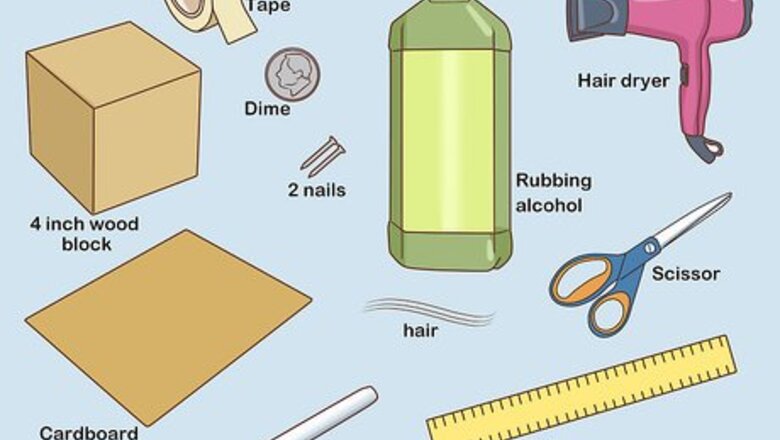
views
X
Research source
The more water vapor in the air, the higher the humidity. High humidity, which is dependent on the temperature, can make a hot day feel even hotter because our bodies cannot sweat as efficiently with the extra moisture in the air. You may have noticed that your hair becomes frizzy on a humid day. Hair expands when there is more moisture in the air.[2]
X
Trustworthy Source
Science Buddies
Expert-sourced database of science projects, explanations, and educational material
Go to source
Using this principle you can create a basic hygrometer with your hair to measure relative humidity.
Making a Hygrometer with Hair
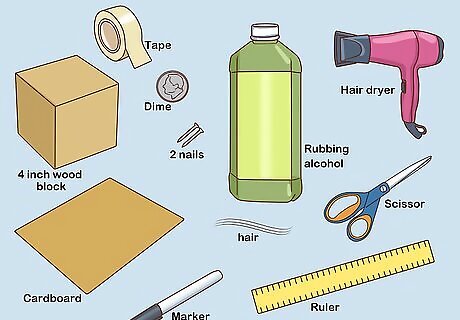
Gather the necessary materials. To make a hair hygrometer you will need 2-3 pieces of hair at least 12 inches long, a 9 inch by 4 inch wooden block or piece of cardboard, two pins or nails, rubbing alcohol, a dime, tape, a marker, a sheet of plastic transparency, a ruler, scissors, and a hair dryer. Most of these materials should be easily found around the home. If you’re using nails, you will also need a hammer. Parental supervision is advised during use of the hammer. You can also substitute the transparency sheet for stiff cardstock or cardboard.
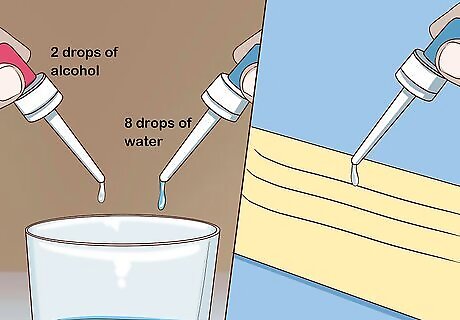
Clean the hair with diluted rubbing alcohol. Mix 2 drops of alcohol and 8 drops of water. Wipe the hairs with the mixture to remove oils or hair care products. The cleaner the hair is, the more water it will be able to absorb. Keep the hair on a white piece of paper so you don’t lose it while you build the rest of the hygrometer. Clean multiple strands of hair in case some break during the assembly process.
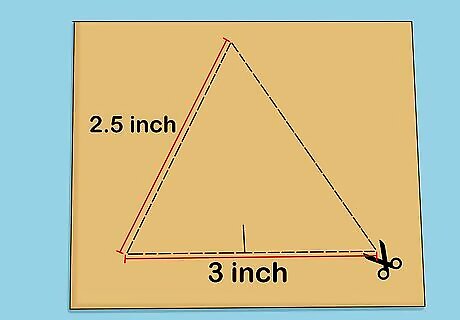
Cut a small triangle pointer. This pointer will be the arrow that allows you to measure relative humidity. The pointer can be made out of stiff cardboard or the plastic transparency sheet. Trace a triangle onto the sheet that has a base of 3 inches and sides that are about 2.5 inches tall. Cut out the triangle using scissors. Mark a spot about 1.5 centimeters from the base of the triangle in the center. This will be the attachment point for the pointer.
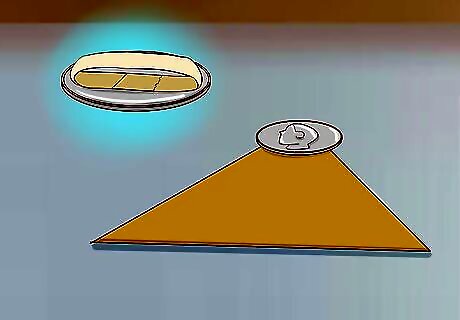
Tape the dime onto the tip of the pointer. Using a piece of tape, attach the dime close to the tip of the pointer. It’s okay if the dime hangs off the edges a little bit. The dime serves as a weight, to keep the hair taut and straight. If tape does not work, you can use a dab of hot glue. Keep in mind, this is a slightly more permanent solution.
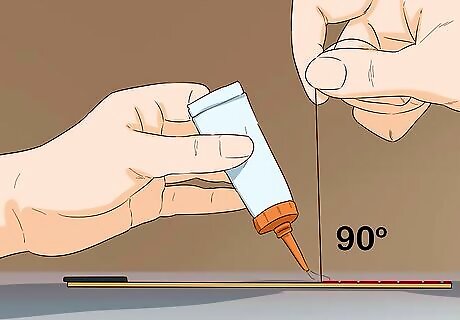
Attach the hair to the pointer. Glue the hair to the hygrometer pointer between the dime and the marking for the attachment point. The hair should be perpendicular (make a 90 degree angle) to the pointer.
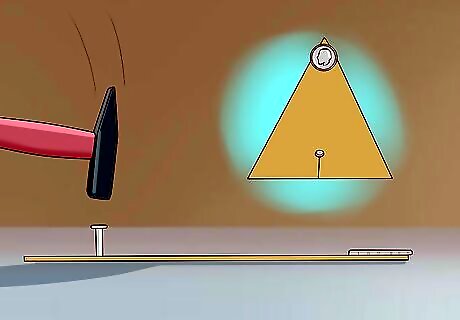
Fasten the pointer to the wood block with a pin or nail. Using the mark you made earlier, poke a hole through the pointer with a pin or nail. Hammer the pin/nail into the 9-inch-by-4-inch (22.86-cm-by-10.16-cm) wood block base about 6 3/4 inches (17.15 cm) from the top, with the pointer parallel to the ground (hanging horizontally). Make sure the hole is large enough for the pointer to swivel around the nail.
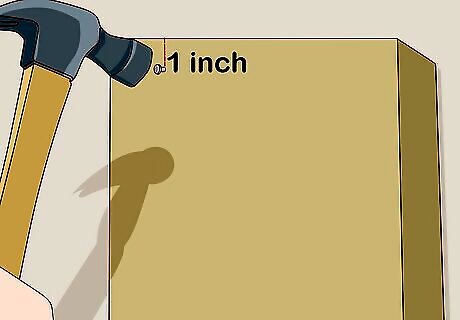
Hammer a second nail into the block about 1 inch (2.54 cm) from the top. Measure 1 inch from the top of the block on the side where the pointer is positioned. Mark a point that is straight up from where the hair is positioned. Hammer the nail into this spot on the block. This second nail will be the anchor point for the hair.
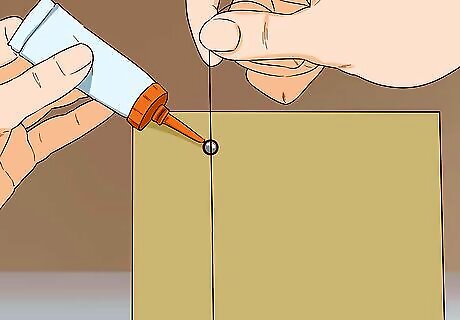
Glue the other end of the hair to the nail at the top of the block. Pull the piece of hair taut and wrap it around the nail at the top of the block. Add a dab of glue to secure the hair in place. You may need to hold the hair while the glue dries to make sure it is taut. Make sure the hair is pulled tight and the tip of the pointer is horizontally straight/parallel to the ground. Trim any extra hair.
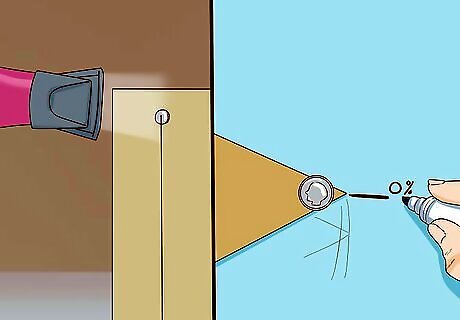
Calibrate the hygrometer. Using a hair dryer and a wet rag, you can simulate the conditions of zero and one hundred percent humidity. Dry the hair with a blow dryer until the pointer does not move anymore. Make a mark on the wood with a paint pen and label it 0 percent. This is the point at which there is no water vapor absorbed by the hair. Put the hygrometer in a sealable plastic box with a wet rag. After 10 minutes, make a tiny mark with a pencil at the pointer's location and put the hygrometer back in the box. Check it again in another 10 minutes; continue this process until the pointer stops moving. Mark that spot with a marker and label it 100 percent. Divide the space between 0 percent and 100 percent into 10 spaces and label them 10 percent, 20 percent, 30 percent and so on. You can also calibrate your hair hygrometer by setting it on the bathroom counter while you take a shower. After marking the 100 percent humidity line, aim your hair dryer at the hair until the pointer stops moving and mark 0 percent.
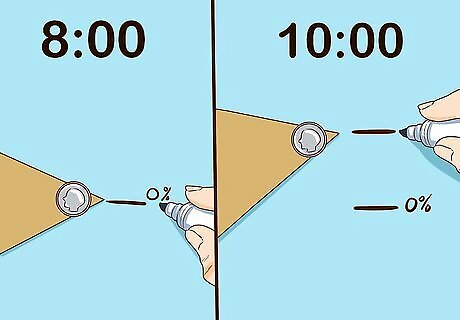
Check the position of the hygrometer pointer at different times of the day and record the results. Place your hygrometer on a shelf in the house or outside in an area that is protected from rain or snow. As the hair dries or absorbs water, the pointer will move up or down to show the humidity of the air. While the measurements are not especially accurate, they will give you an idea of the relative humidity in the air.
Making a Wet/Dry Hygrometer
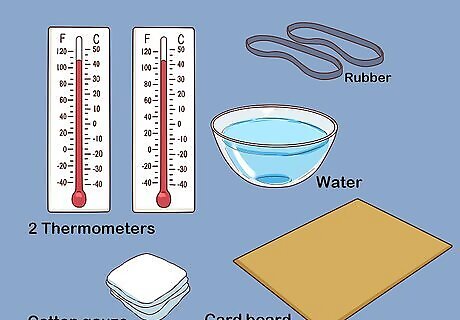
Gather the necessary materials. To construct this hygrometer, you will need two thermometers, some cotton gauze, a rubber band, a small container, some water, and a piece of cardboard large enough to hang the two thermometers.
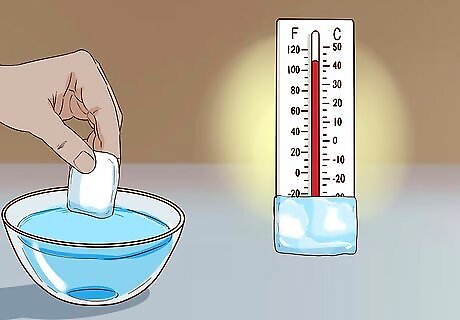
Cover one thermometer with wet gauze. Moisten the gauze with some water and wrap it around the bulb (bottom tip) of the thermometer. Secure the gauze in place with the rubber band. In order for this hygrometer to work long term, the gauze must stay moist during readings. Fill the small container with water and make sure part of the gauze is in contact with the water. The gauze will stay wet as long as it is touching the water in the container.
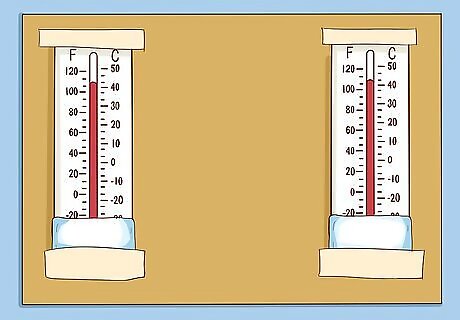
Attach the two thermometers to the cardboard. Align the thermometers so that they are sitting next to each other with their tops and bottoms in the same place. Secure them in place using tape or hot glue. Use caution when working with hot glue.
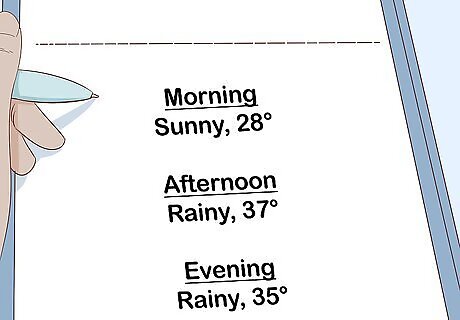
Record the temperatures on each thermometer. This hygrometer allows you to determine a relative humidity level of the air. Look at each thermometer at eye level and record the degree at which the red liquid sits. Write down these temperatures. Make multiple recordings throughout the day and take note of the weather as well. Is it sunny? Is it raining?
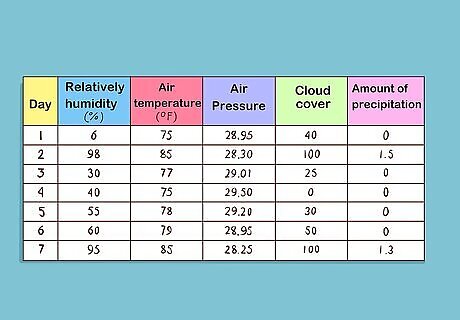
Determine relative humidity using a wet/dry humidity table. Obtain a wet/dry humidity table like the one found here. The left side of the table (y-axis) is the temperature reading of the dry thermometer. The horizontal (x-axis) of the table is the difference between the dry thermometer and the wet thermometer. Subtract the dry thermometer temperature from the wet thermometer (wet – dry = difference). Find the temperature of the dry bulb on the vertical axis and then find the corresponding difference on the horizontal axis. Where those two meet on the graph tells you the relative humidity. Be sure that your table matches the scale you are using. If you’re using Fahrenheit, use a Fahrenheit table. If you’re measuring in Celsius, use a Celsius table.

















Comments
0 comment